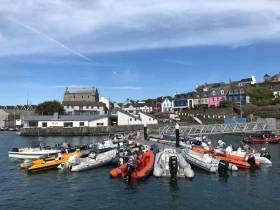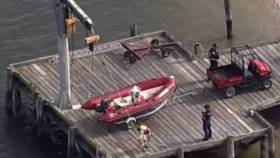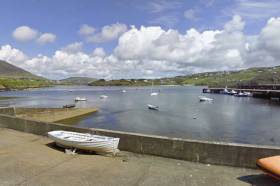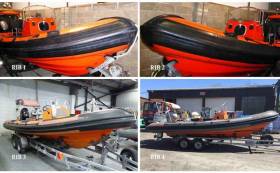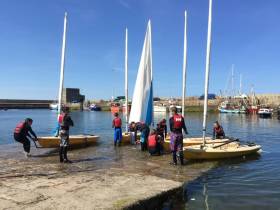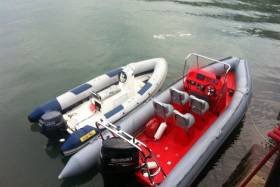Displaying items by tag: Rib
British Duo Set New Round Ireland RIB Speed Record
#Record - Marc Lyne and Dean Watson have smashed the longstanding under-30ft Round Ireland powerboat record by almost half an hour, pending UIM ratification.
On Friday 13 July last the duo set a provisional time of 18 hours and 12 minutes — some 25 minutes faster than Philip Fitzgibbon and Mike Shanahan’s RIB record of 18:38:50 set in 2009.
And Lyne claims the time could have been more than two hours’ better “if we had not been beaten up for the last 40 miles from Cork to Crookhaven”.
While Team Hibernia set a sub-13-hour time with their wave-piercing powerboat in 2016, the record for under-30ft boats was still standing. And that’s the time on which Lyne and Watson put their sights after breaking the Round Anglesey time, in Watson’s home waters, back in 2015.
Over the next three years, the pair set about preparing their boat, a Scorpion 8.5m RIB dubbed Ocean Devil, to make the most of its Yanmar 315HP inboard engine.
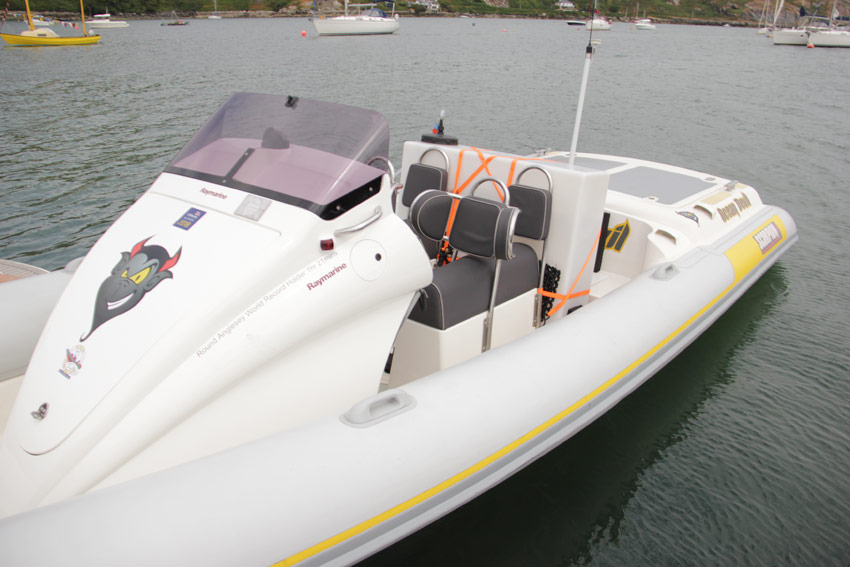 The Scorpion 8.5m RIB Ocean Devil prepped and ready to go
The Scorpion 8.5m RIB Ocean Devil prepped and ready to go
That involved a series of main prop modifications, as well as the installation of new fuel tanks with 400 litres’ capacity in addition to the 363l main tank, all while still getting as close as possible to the RIB’s top speed of 51 knots without revving over 3,750 rpm.
A key element of their set-up was using gravity to tap into the main tank through the service hatch by the helm, to avoid the use of battery-sapping pumps adding unnecessary weight.
With 45 knots achievable when fully loaded, and the engine mount put through rigorous sea and wake trials in the Solent, the next step was to reduce the overall weight. That meant new batteries, courtesy of DMS Technologies, and replacing the heavy A-frame with a removable radar post and a carbon post for the VHF antenna.
Safety remained paramount in their modifications, with all navigation lights replaced by LEDs, a new radio with built-in AIS from Raymarine, and a full set of offshore flares.
With the new and improved Ocean Devil ready for action, what Lyne and Watson needed next was a winning strategy. Cue a consolation with Mike Deacon, a RIB speed record breaker in his own right, who offered a list of suggestions — the most important of which was to wait till the weather was just so.
“The reason he and David his son had never attempted the Ireland world record was that you had to get the weather exactly right, and that would mean having the boat in Ireland and ready to go at 24 hours’ notice,” Lyne says. “So really, the people best placed to attempt the record were already in Ireland.”
Fast forward to summer 2018 — the best experienced in Ireland for years — and all the pieces were in place for a record run.
 Course plotted: Lyne and Watson’s planned stages around the Irish coast
Course plotted: Lyne and Watson’s planned stages around the Irish coast
With the support of Denis Dillon at Irish Sailing, and Stena Line’s Fishguard-Rosslare ferry route, Lyne and Watson were soon in Skibbereen fuelling up ahead of their planned start in Crookhaven.
Dillon put the duo in touch with Justin McInerney, a previous Round Ireland record holder with Team Pulsar Racing, who would be their official timer on the day. His advice on the best stops to avoid busy slipways would prove crucial to their success.
With their boat and safety equipment checked over, and the passage plan forward to Ireland’s four main coastguard stations, Lyne and Watson made an early start at 4am on Friday 13 July.
That date would be true to its reputation as the duo rounded their first headland and ploughed headlong into a confused three-metre sea, halving their speed to 25 knots.
Thankfully that struggle was only for the first hour, and the rest of the day would prove to be an exceedingly lucky one, with flat seas and quick refuelling stops most of the way from Kerry to Portrush to Rosslare.
Spirits were high as the duo neared Cork late on Friday afternoon to complete their loop, only to run into that confused sea state once more — and a mishap on leaking hydraulic fluid that saw Watson bash his knee on top of a strained hip.
Lyne recalls of those dreaded final hours: “We can’t get any speed without getting hit hard occasionally which is taking its toll on both of us as we have been going for 16 hours. We duck behind the headlands, get some speed, then get beaten up as soon as we have to round the next headland.
“We remember to cut outside of all charted land as there are a few very small islands marked in some of the bays. We are losing a lot of time; rough calculations show us matching the current record – no!”
A little further on, and their situation improves: “I have the heading line on the plotter set to 12 miles, and can see the length of the line versus Fastnet Rock, which we are to round and then head towards Mizen Head,” Lyne remembers. “It’s three line lengths and we are down to 25 knots … that’s an hour and a half, that means we will equal the record.
“Dean moves to sit behind me so he can use his legs efficiently to cushion any impact without slipping.
“All good, we are on top of it now, back up to 35kt, then 40kt. The waves are getting smaller and more regular as we get to Fastnet Rock, round Fastnet, to finish at Mizen Head, torch in hand.
“Justin is on the radio: ‘Congratulations lads, you have done it.’”
Attempting and breaking this record “has taught me a few other things about life, boating and Ireland,” Lyne says, singling out Justin McInerney and “superstar” Denis Dillon for their assistance.
“I started a conversation with Denis over a year ago, and once he knew we were serious for July 13th, he did everything in his power to make it happen.”
McInerney, meanwhile, put in a call to Philip Fitzgibbon, one of the record holders Lyne and Watson have tentatively dethroned, to tempt a comeback challenge somewhere along the line.
As for Lyne and Watson’s trusty Ocean Devil, and how it fared from those 18 hours at sea? Nothing broken, though a handful seals need replacing — surprising little needed after so long flat out around the island of Ireland.
Besides Denis Dillon at Irish Sailing, and Justin and Antoinette McInerney, Lyne and Watson also expressed their tanks to Raymarine, DMS Technologies, Stena Line, BIBOA (Mike Deacon, Chris Strickland, Neil McGrigor), Claire at Marconi House in Crookhaven, and Mark at the Barleycove Beach Hotel near Mizen Head.
We're Gonna Need a Bigger Pontoon at Baltimore Harbour!
Baltimore Harbour's new landing pontoon and gangway to aid boating visitors and aquatic tourism are proving very popular as our photos by Michael Chester from the West Cork Harbour reveal.
RIBS have proliferated like chickweed around the coast over the last decade or so but finding a handy place to moor up is often a problem, not only in West Cork.
Baltimore's new handy facility makes it easier and safer to get afloat and moor boats overnight without the hassle of having to moor on a swinging mooring or retrieve boats from the water.
 The landing pontoon and gangway at Baltimore Harbour conveniently located close to the Sailing Club Photo: Michael Chester
The landing pontoon and gangway at Baltimore Harbour conveniently located close to the Sailing Club Photo: Michael Chester
But it wasn't always that easy. As Afloat.ie reported back in 2013, all that previously existed in Baltimore was a temporary floating pontoon for visiting boats present only in the summer season. That pontoon was capable of taking for up to seven or eight boats and was used by a mix of cruising boats, ribs and local fishing boats, often rafting up in busy periods.
In February 2015, a new landing pontoon and gangway to aid boating visitors and aquatic tourism were installed.
Nearby, there are now also new facilities at Cape Clear Island and works at Schull Harbour will further extend the cruising range for RIBs and pleasure boats to explore the boating wonders of the West Cork coast.
Build it and they will come!
RIB Death in America - Propellors Are Lethal Weapons
We know that RIB crews and Instructors in our Junior Sailing Programmes are given the most rigorous training in safety writes W M Nixon. Yet over the years who hasn’t occasionally seen an outboard-driven RIB being treated as though it’s a toy, designed for playing harmless nautical chicken? But in reality any propellor – and an outboard propeller in particular – is probably the most lethal weapon with which you could possibly share the sea, even when it is being used responsibly with the best intentions.
So a report here in American Scuttlebutt will strike a chill in the hearts and minds of all thinking sailors. Put simply, a ten year old boy sailing pupil has been killed by an instructor’s RIB while taking part in a capsizing exercise. The story is here. It may have happened in America. But it is always lurking, ready to happen anywhere.
RIB Accident Claims Two Lives in Donegal
The Coast Guard has recovered the bodies of two men from the water in Co Donegal yesterday. One man was in his 50s and the other man was in his 40s.
The incident occurred off Malinbeg, Glencolmcille, Co Donegal.
Whilst on exercise to Mullaghmore yesterday morning, the volunteer crew of the Bundoran RNLI Lifeboat responded to a pan-pan emergency call from Malin Head Coast Guard at 11.40am. A five metre RIB had been found at Malin Beg near Glencolmcille, County Donegal and one person was missing.
At around 12:15pm, the Bundoran Lifeboat began a shore search from Teelin towards Malin Beg Head. The Sligo based Rescue 118 helicopter was on scene at Malin Beg Head with the all-weather lifeboat from Arranmore also requested to launch. A shore crew from the Killybegs Coast Guard unit was also tasked.
Following notification from Rescue 118 that a casualty had been spotted in the water at Malin Mor, the lifeboat crew made their way to the scene and recovered a casualty just before 1pm.
The casualty was brought to Teelin Pier and transferred into the care of the emergency services where he was pronounced dead by a local doctor.
Buoyant Prices Achieved at Kinsale RIB Auction
Dominic Daly auctioneer achieved good prices at the public auction of six RIBs at Kinsale Boat Yard, Co. Cork on Tuesday, 23rd May, 2017.
Daly told Afloat.ie the XS RIBs sold for €30,000 and €28000. The Redbay RIBs 6.5m sold for €14,000 13,500 and €8,700.
A Jet ski sold for €2000.
Details of the boats are here
Dominic Daly Auctioneer – in association with Promara Ltd – Noel O Regan will auction six RIBs and a jet ski (details below) at Kinsale Boat Yard, Co. Cork at 12 noon on Tuesday, 23rd May, 2017.
For further details, please contact: Dominic Daly 087 2550486 [email protected] and Noel O Regan 087 3435666 [email protected]
Scroll down for specs and more photos of each RIB
VENDORS: SFPA (Sea Fisheries Protection Authority)
RIB 1 Maker XS RIBS Model 7.0m
Built 2010 Length 7.0m
Beam 2.6m Engines 2 Yamaha 100 HP 4-stroke
Console Patrol with 4 jockey seats Road trailer 4 wheel road trailer
Fuel tanks 2 tanks fitted under decks Storage Storage box aft
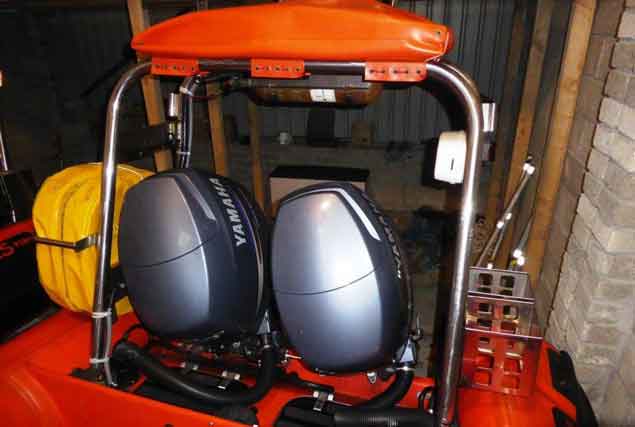

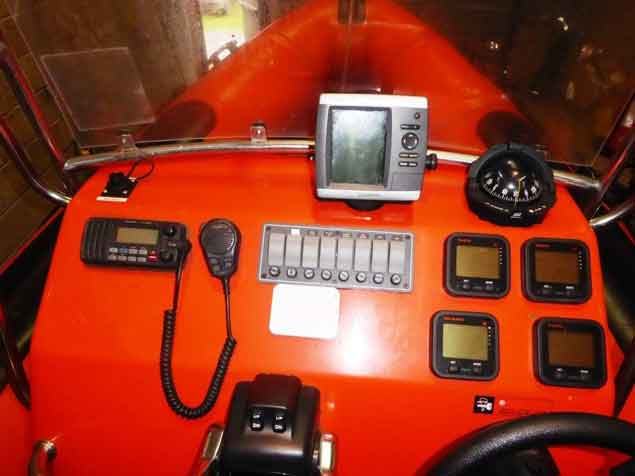


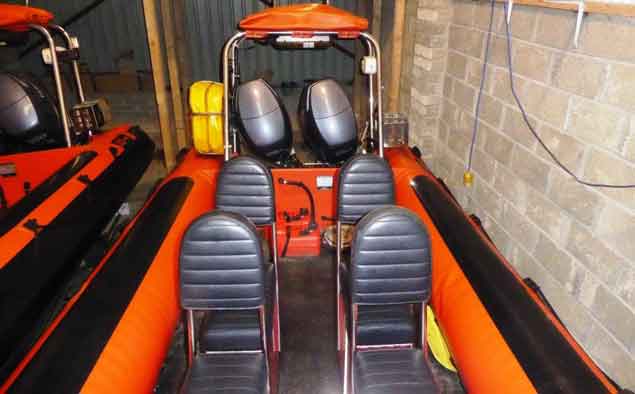
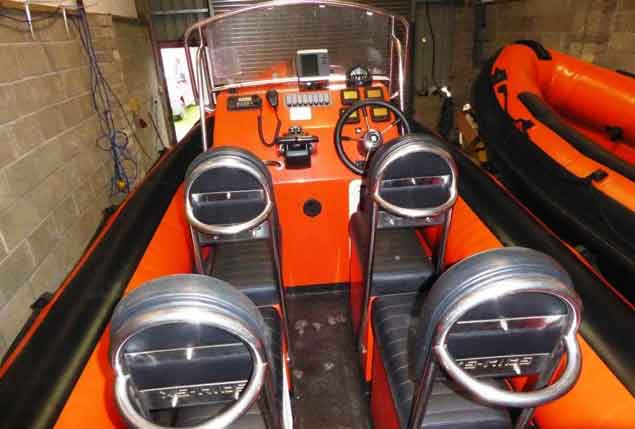 Above: photos of RIB 1 Maker: XS RIBS Model : 7.0m
Above: photos of RIB 1 Maker: XS RIBS Model : 7.0m
RIB 2 Maker XS RIBS Model 7.0m
Built 2010 Length 7.0m
Beam 2.6m Engines 2 Yamaha 100 HP 4-stroke
Consol Patrol with 4 jockey seats Road trailer 4 when road trailer
Fuel tank 2 tanks fitted under decks Storage Storage box aft
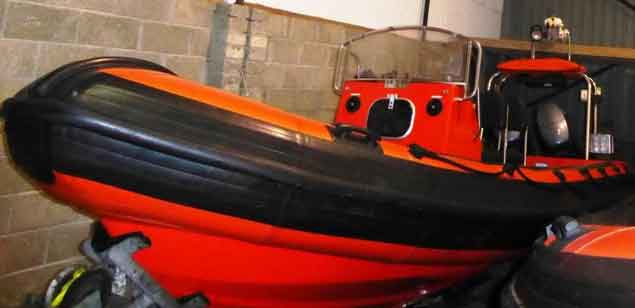


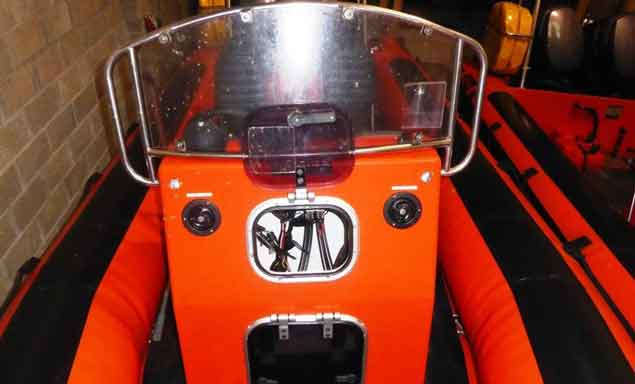
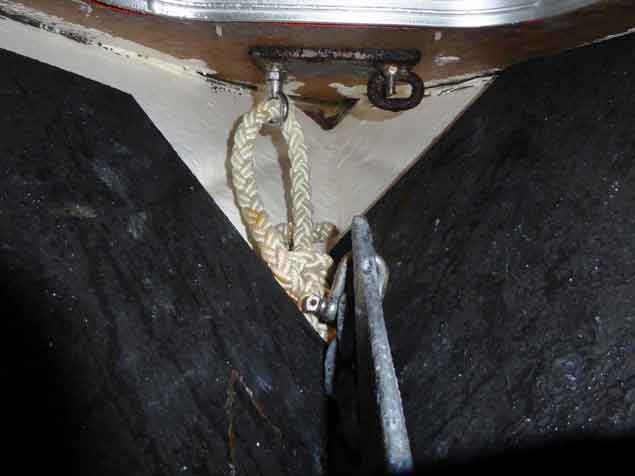

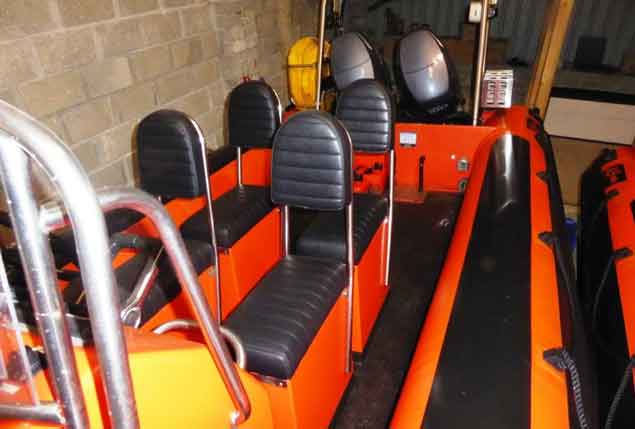
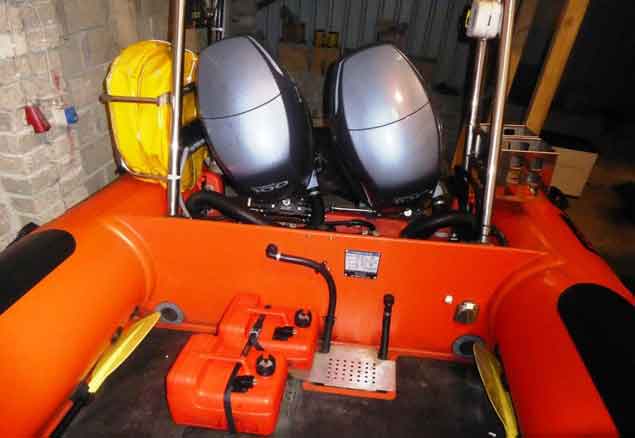 Above: Photos of RIB 2 Maker: XS RIBS Model: 7.0m
Above: Photos of RIB 2 Maker: XS RIBS Model: 7.0m
VENDORS: IFI (Inland Fisheries Ireland)
RIB 3 Maker Redbay Model Stormforce 6.5
Built 2000 Length 6.5m
Fuel tanks 2 tanks fitted above decks Storage Storage box aft
Console Single 4 jockey seats Engines 2 Suzuki 90 HP 4-stroke
Road trailer 4 wheel road trailer
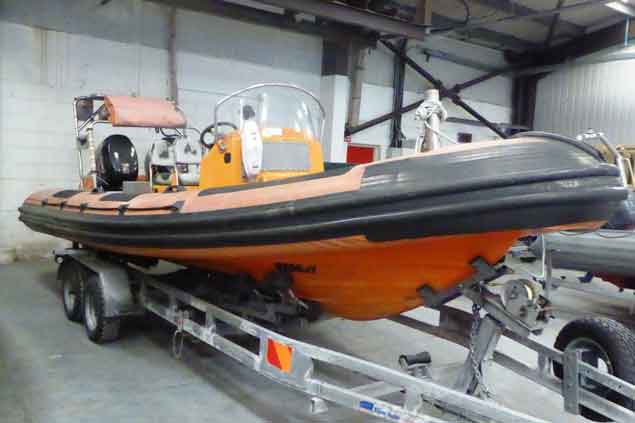

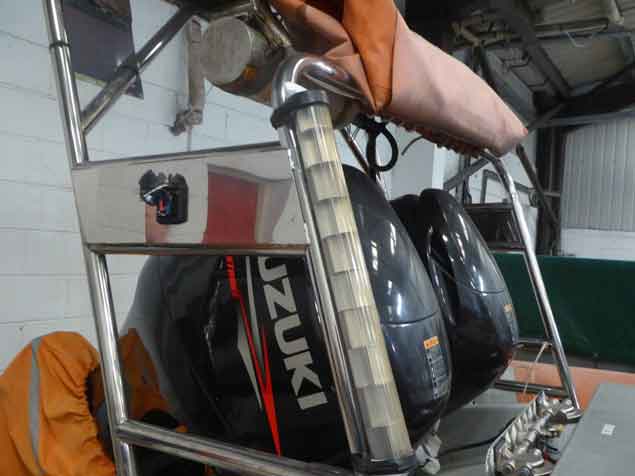
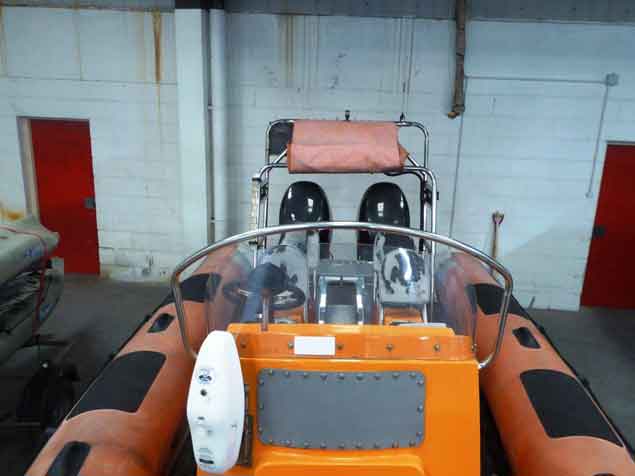
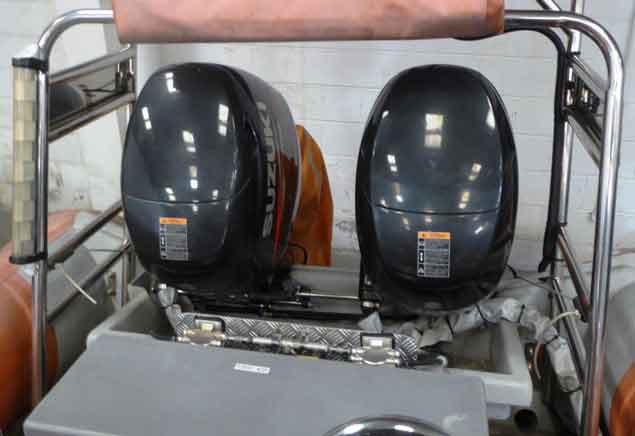
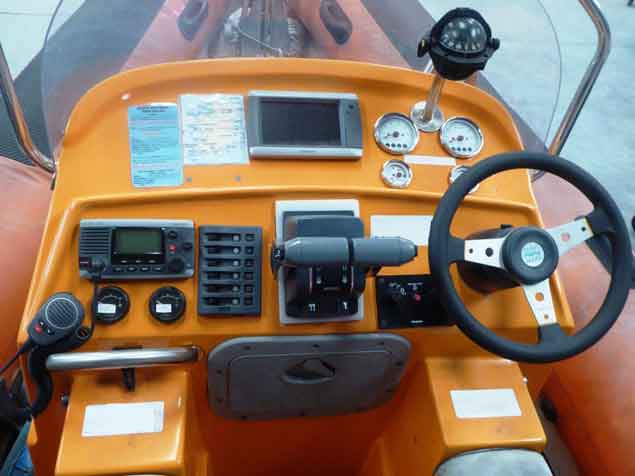
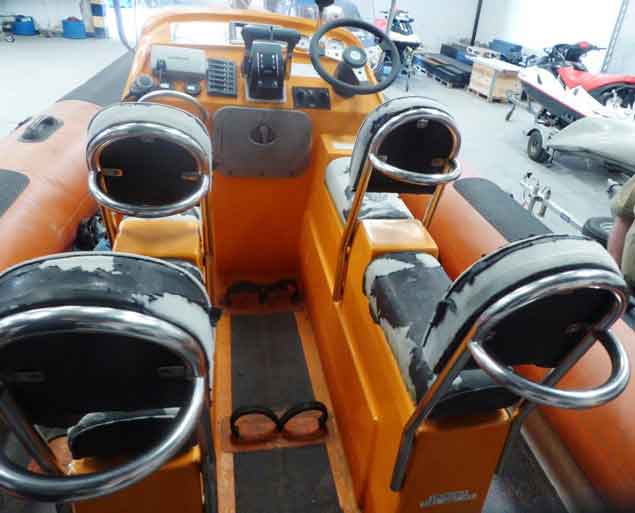 Above: photos of RIB 3 Maker: Redbay Model: Stormforce 6.5
Above: photos of RIB 3 Maker: Redbay Model: Stormforce 6.5
RIB4 Maker Redbay Model Stormforce 6.5
Built 2000 (or earlier) Length 6.5m
Console Single 4 jockey seats Engines 2 Honda 90 HP 4-stroke
Road Trailer



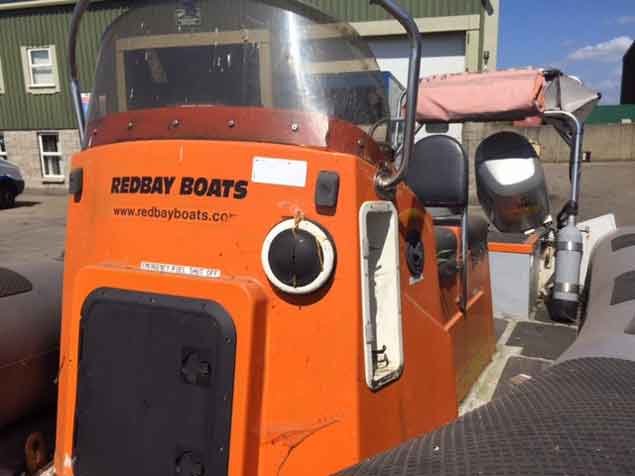
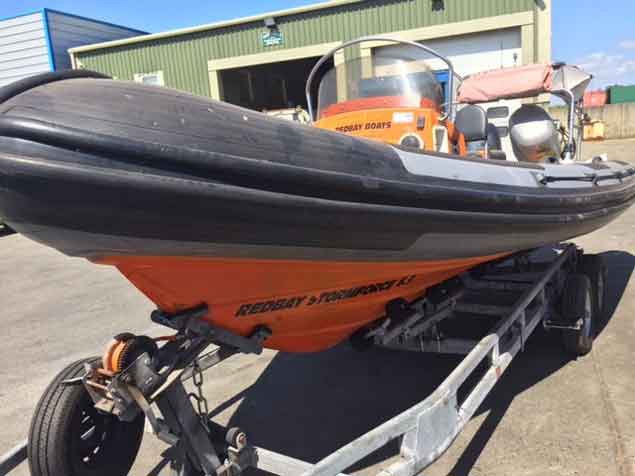
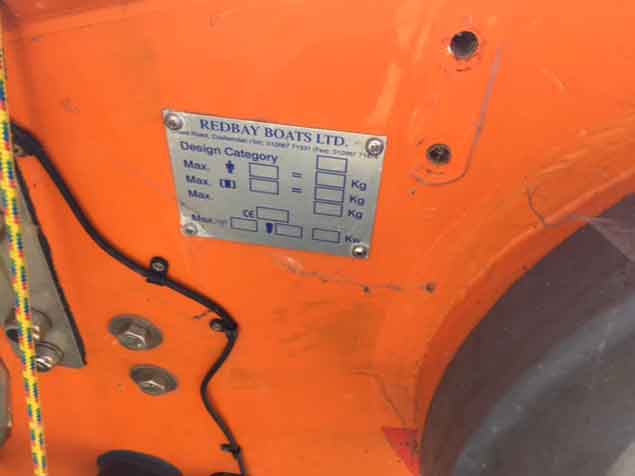
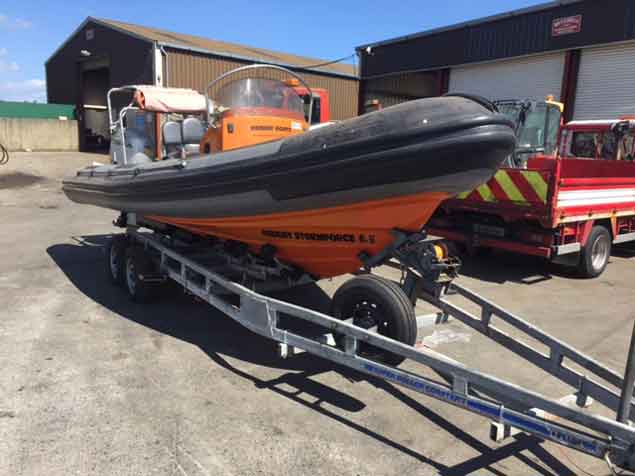
 Above: Photos of RIB4 Maker: Redbay Model:Stormforce 6.5
Above: Photos of RIB4 Maker: Redbay Model:Stormforce 6.5
RIB 5
Make RIB350 Rigid Inflatable
Built 2006
Engines Yamaha 25 hp electric & manual start
Engine detail model 25NEO
Console Single seat behind console
Fuel tanks Portable tanks
Road Trailer two wheel trailer
Equipment paddles, cover, fish finder, air pump

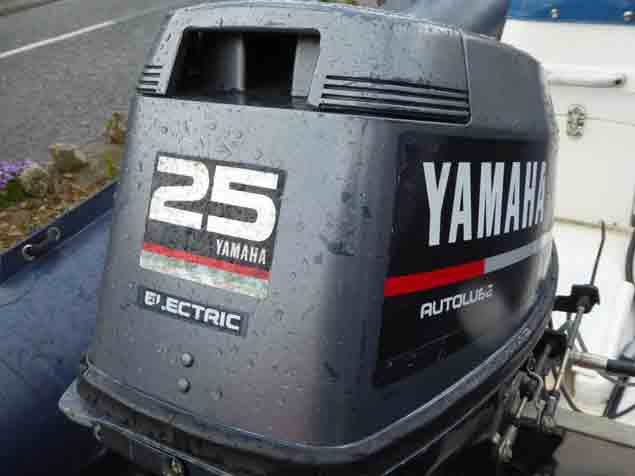


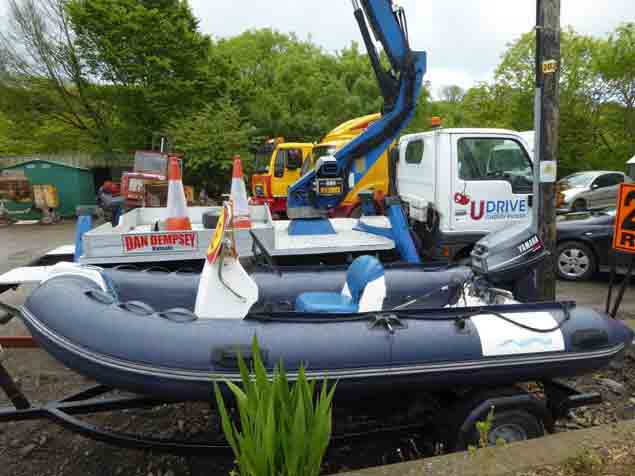
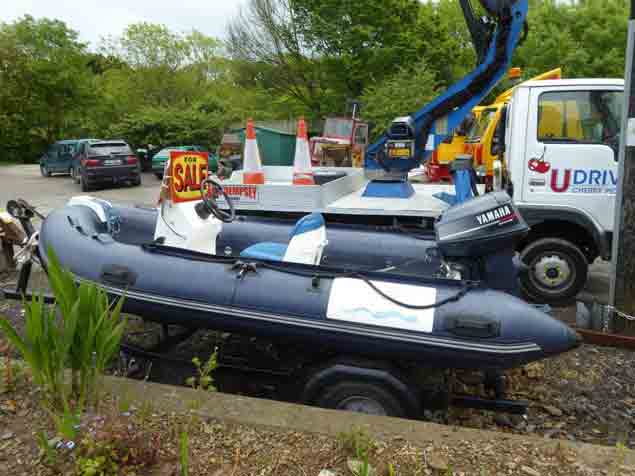
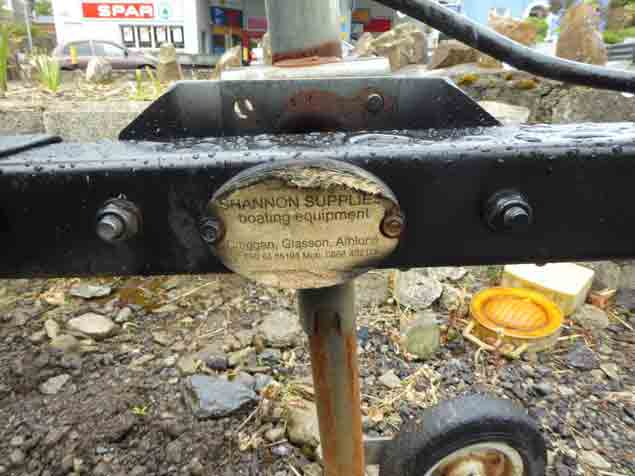

RIB 6
Maker Redbay
Model 6.5
Built 2001
Road trailer trailer
Engines 2 Evinrude 90HP


Jet Ski
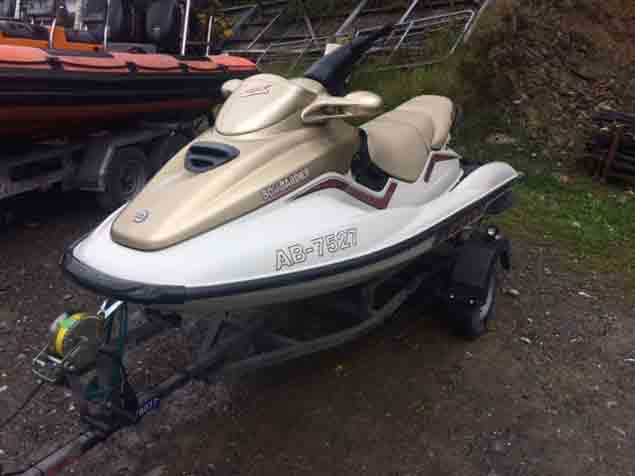

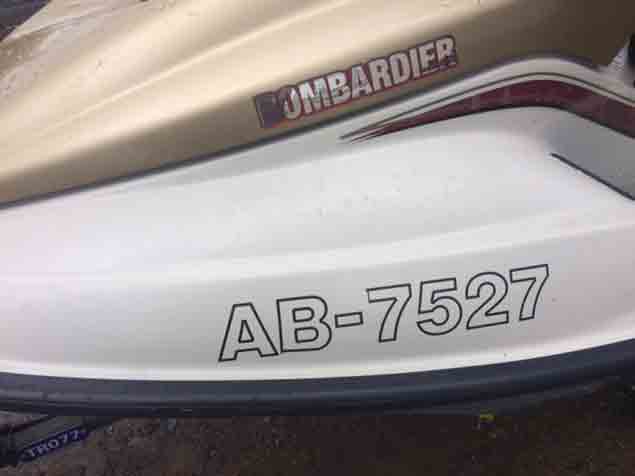
For further details, please contact: Dominic Daly 087 2550486 [email protected] and Noel O Regan 087 3435666 [email protected]


Dominic J. Daly & Co. FRICS, MSCSI
CHARTERED SURVEYORS & VALUERS
Pembroke House Tel: 021 – 4277399
Pembroke Street Mobile: 087 – 2550486
Cork. Email: [email protected]
#Crime - A sail training boat owned by the Irish Youth Sailing Club is among those vandalised in an incident at Dun Laoghaire’s West Pier over the weekend, as TheJournal.ie reports.
The RIB, which was slashed and had its outboard engine removed, was one of three vessels damaged in the attack, the aftermath of which was discovered on Sunday morning (7 May).
Also affected were the Dun Laoghaire Sea Scouts, who lost an engine to theft, while a third engine was stolen from a yacht in the nearby inner harbour — the latest incident in what’s being described as a rise in thefts and vandalism in the area.
Kyron O’Gorman of the IYSC says a replacement training RIB could set the club back at least €7,000.
TheJournal.ie has more on the story HERE.
RIB Needed For Charity Irish Sea Coastal Rowing Race
Dun Laoghaire's St Michael's Rowing Club is participating in a Charity Irish Sea fundraising race for the RNLI over the May Bank holiday but one of its support RIBs has pulled-out. The club has put a shot-out for a replacement to Afloat.ie readers.
The RIB must be over 5.5 metres in length.
The club says it will cover associated fuel and crew costs. Full details in the poster above that is also downloadable below in a larger format.
Motorboat Hire: Rent a RIB on Dublin Bay
Ever wanted to rent a Rigid Inflatable Boat (RIB) for a blast on Dublin Bay? Here's your chance. The Irish National Sailing School's 4.5m RIBTECs fitted with Yamaha 40hp engines are ideal for trips around the capital's waters. Included in the price of a three hour charter at €115 is a full tank of fuel.
The operating area for these boats is Dublin Bay, south of the shipping lane and as far East as Dalkey Island. The minimum qualification required to rent the boat is a National Powerboat Certificate (Level 2).
For more details on the offer check out the listing on Afloat's Marketplace here.
Spinal Injuries Ireland Seeks Support For Charity Work; Including RIB Trips on Dublin Bay
As part of its annual fundraising campaign, Spinal Injuries Ireland is seeking support from the sailing and boating community on its 'Colour me Friday' campaign day today.
Spinal Injuries Ireland is the only support service for people who have sustained a spinal injury and it provides a pathway of services for patients and their families from onset of injury to inclusion in their local community.
One of these successful pathways is SPII's 'Active Me' programme, an actvity that brings patients out on the SPII RIB on Dublin Bay.
SII relies on fundraising for 61% of its income. To contribute towards the campaign text CORD to 50300 to donate €4 to SII.




























